Gothic Avenue Tour in Mammoth Cave National Park
- Dan Wagner
- Jan 21, 2024
- 6 min read
Updated: May 30, 2025
Named for it's unusual rock formations resembling Gothic Architecture, the Gothic Avenue Tour unveils the rich historical tapestry woven into the cavern's depths, guiding visitors through intriguing corridors adorned with centuries old graffiti, remarkable formations, and haunting tales of the past. From Methodist Church to the iconic Bridal Altar and Devil's Armchair, each step reveals a chapter of Mammoth Cave's history. Led by knowledgeable park rangers, the tour promises a glimpse into the mysterious and awe-inspiring world that is Gothic Avenue, offering an immersive experience into the subterranean marvels hidden beneath the surface.
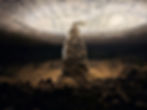

Bathrooms No
Water No
Stairs 80 descending, 80 ascending
Duration 2 hours
The tour kicks off with a quarter-mile stroll along the paved Historic Entrance Trail, starting at the Mammoth Cave Visitor Center. The path descends through a steep valley to reach the Historic Entrance, the largest natural opening into Mammoth Cave, serving as a passage for exploration for nearly 3,000 years.

After a short descent into the cave and a brief walk through the dimly lit passage known as Houchins Narrows, the tour arrives at the Rotunda, one of Mammoth Cave's most well-known cave rooms. The expansive chamber spans roughly one quarter acre and features a circular-shaped ceiling that towers nearly 40 feet above.

Here, in Mammoth Cave's sixth-largest cave room, three intersecting passages - Houchins Narrows, Broadway, and Audubon Avenue - converge. The tour progresses along Broadway Avenue, where visitors will encounter numerous wooden pipes on the left side of the cave, remnants of saltpetre mining from the early 1800s.

After a few hundred yards, Broadway Avenue descends into a large canyon room named Methodist Church. In the 1830s, Reverend George Slaughter Gatewood conducted church services here, occasionally taking parishioners' lanterns upon their arrival to ensure they remained throughout his sermons. He preached from a formation referred to as The Pulpit, which can be found along the left side of the trail, near the bottom of the Methodist Church room.

Rangers frequently pause at this point to delve into the cave's history. If you're lucky, they may showcase one of the instances of ancient Native American rock art within Mammoth Cave.

Near the edge of one of the enormous limestone slabs along the trail, there is a petroglyph resembling a checkerboard pattern. The true intention of the ancient artist remains unknown, however, similar depictions have been discovered both in the local area and across the country.

Proceeding from Methodist Church, the tour advances along Broadway Avenue, passing more leaching vats akin to those in the Rotunda, until reaching a junction known as Booth's Amphitheater. The large canyon passage, named after 19th-century Shakespearean actor Edwin Booth, brother of the infamous John Wilkes Booth, guides visitors to Gothic Avenue. Those who later opt for either the Historic or Extended Historic Tours would proceed straight here, while those on the Gothic Avenue Tour turn right and ascend a short staircase.

The top of the staircase marks the beginning of Gothic Avenue. At this point, park rangers frequently pause to discuss more of the cave's history, recounting the tale of Mammoth Cave's most renowned mummy, Fawn Hoof. They usually highlight Mummy's Seat, a ledge on the left side of Gothic Avenue, where Fawn Hoof and her regalia were exhibited in the early 1800s. To learn about the fascinating story of Fawn Hoof and the various other mummies once housed within Mammoth Cave, consider reading The Mummies of Mammoth Cave.
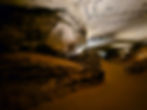
In addition to Mummy's Seat, park rangers will point out the first instances of the historical graffiti that has contributed to Gothic Avenue's fame. One of the most iconic signatures within Gothic Avenue, if not the entire cave, is that of the enslaved cave guide Stephen Bishop, who simply burned "Stephen" into the ceiling.
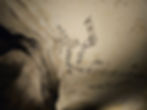
Following a brief stroll, the tour arrives at the Register Room, where visitors will encounter thousands of signatures left by guides and visitors dating back to the early 1800s. In the early days of Mammoth Cave, guides used candles crafted from animal fat to burn their names and other images into the ceiling, which today is celebrated as historic graffiti.

Above the second large rock cairn near the beginning of the Register Room, visitors will find the signature of B H Roundtree, connected to American outlaw Jesse James. In a notorious Kentucky stagecoach heist orchestrated by James, Roundtree became one of the victims, losing his pocket watch—engraved with his initials—to the outlaw. It was during this incident, as James allowed all the victims to stay seated while being robbed, that he acquired the moniker "the Gentleman Bandit."

Other historically noteworthy names are scattered throughout the Register Room, including that of Stephen Bishop's master, Franklin Gorin, the purchaser of Mammoth Cave in 1838. Fleming Gatewood, a manager of Mammoth Cave and brother-in-law of the founder of Bell's Tavern, a celebrated hostelry in what was then called Glasgow Junction (today Park City), also left his signature at the same time.

Following the Register Room, the path winds through Gothic Avenue, surrounded by rock walls built by the Civilian Conservation Corps in the mid-1930s.

Afterward, it traverses through a region referred to as Vulcan's Furnace, also known as Vulcan's Forge. This area consists of a pile of minerals gradually washed from the surface and gathered over time.
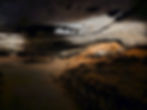
Following Vulcan's Furnace, the pathway leads through gothic-inspired surroundings, lending the passage its distinctive name.
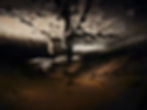
The path then proceeds to a spacious chamber called Gothic Chapel, previously known as Stalagmite Hall. Within this chamber, notable features include several large dripstone columns, highlighted by a three column formation known as the Bridal Altar.
During the 1800s and 1900s, numerous couples exchanged vows at the Bridal Altar. According to a tale from the 1800s, a bride who had sworn to her mother "never to marry any man on the face of the earth" honored her promise by marrying her love in Mammoth Cave, beneath the earth.

Just after Gothic Chapel, the trail guides visitors by a fascinating formation recognized as Devil's Armchair.
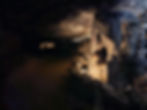
A few hundred yards ahead, the trail ends at a short stone wall. At this point, park rangers will pause to address questions and elaborate on other features of the cave. While Gothic Avenue officially extends beyond the tour's turnaround point, this is the farthest into the passageway that the public can access. Yet, peering down Gothic Avenue beyond the stone wall reveals an old pathway once utilized in days gone by. The stretch of Gothic Avenue past this juncture features attractions like Elbow Crevice, Devil's Cooling Tub, Salts Room, Gatewood's DIning Table, Napoleon's Dome, and others.

Although the public is unable to reach the deepest sections of Gothic Avenue, there is still more to learn about it. Prior to being recognized as Gothic Avenue, the cave bore a more ominous name - Haunted Chamber. This previous mokiner stemmed from a misadventure in the early 1800s involving a miner named Albert who, unfamiliar with the passage and working alone, lost his way. After collecting minerals in a branch off Gothic Avenue known as Salts Room - located beyond today's tour turnaround point - he attempted to retrace his steps but became disoriented halfway, unable to discern which way was out.
Frantically navigating the passage back and forth, his anxiety heightened with each futile attempt. In a final, desperate act, he stumbled over a stone and fell to the ground, extinguishing his lantern and plunging himself into total darkness. Lost and terrified, he began praying for rescue, haunted by the belief that his predicament was a divine punishment for the sins of his past.
As the hours passed without rescue, the miner, convinced of his doomed fate, began to believe that he was no longer on this Earth and had been transported to hell. Lying on the cave floor in total darkness, waiting for devils to consume him whole, he was unaware that his fellow miners, enjoying their dinner far away, had realized his absence. A rescue party of a half dozen men was assembled and they eventually located the miner that evening. After this, the cave earned the name Haunted Chamber, commemorating the terrifying episode of one miner who decided to journey through the depths of the cave alone.
The first reference the Haunted Chamber is found in a letter by Nahum Ward to the American Antiquarian Society on April 4, 1816, later republished in the Lancaster Intelligencer and other newspapers throughout the country.

For an overview on all Mammoth Cave National Park ranger guided tours, check out A Guide To Cave Tours in Mammoth Cave National Park.
_edited.png)





















